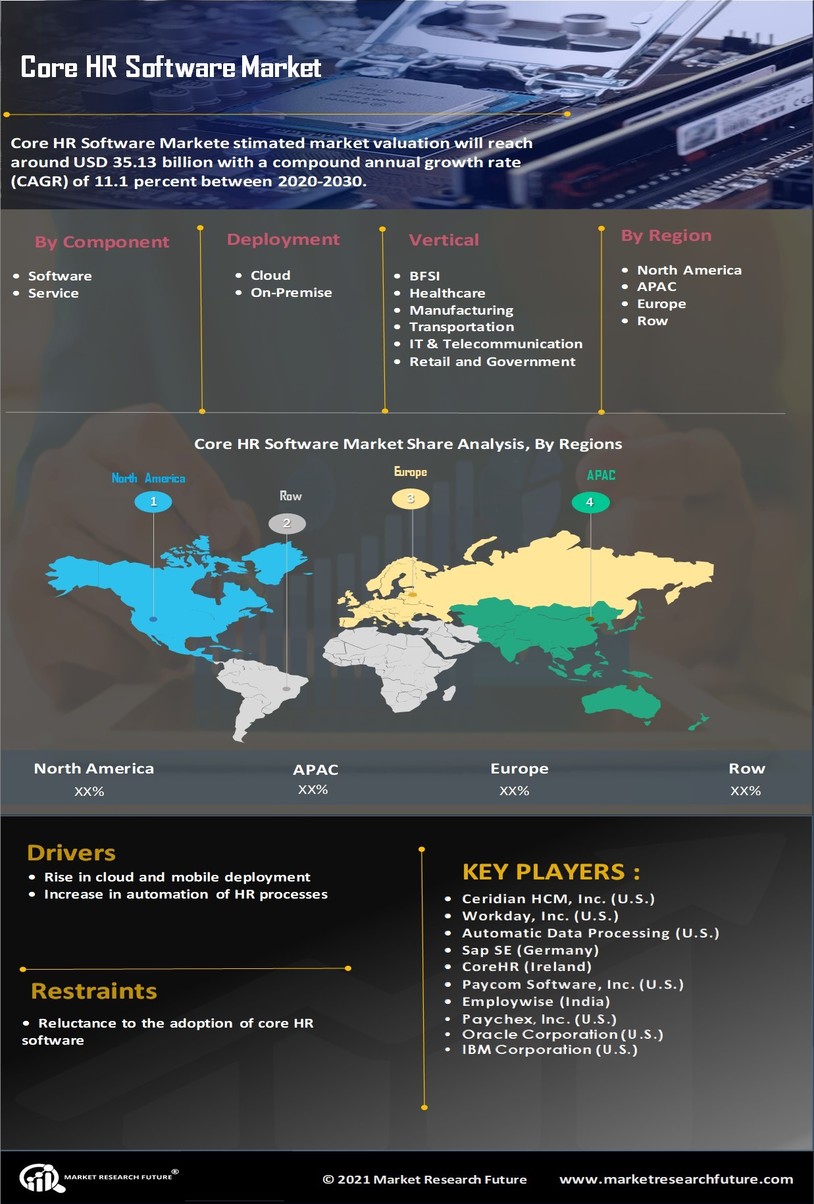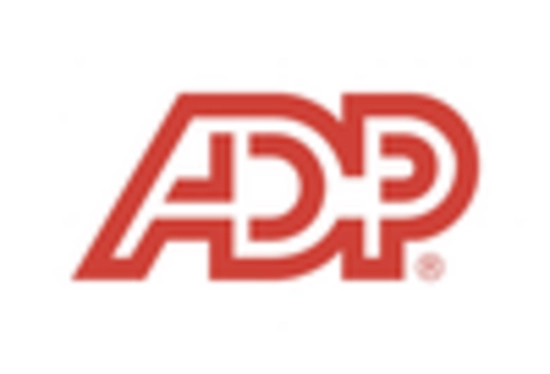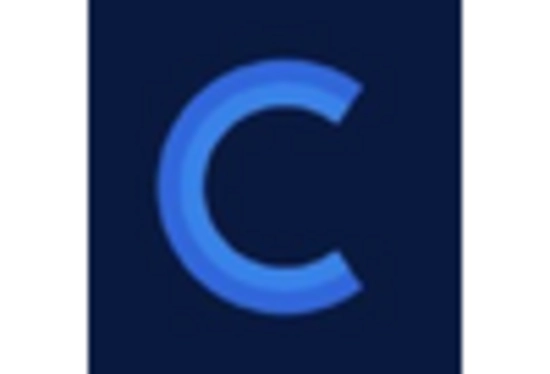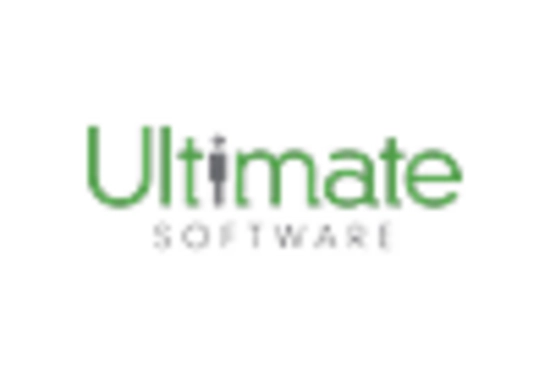Integration of Remote Work Capabilities
The Core HR Software Market is adapting to the changing landscape of work, particularly with the integration of remote work capabilities. As more organizations embrace flexible work arrangements, there is a growing need for HR software that supports remote workforce management. This includes features such as virtual onboarding, remote performance evaluations, and digital collaboration tools. The demand for Core HR Software that can seamlessly integrate these functionalities is likely to increase, as companies strive to maintain productivity and engagement among remote employees. This trend indicates a shift in how HR software is designed and utilized.
Regulatory Compliance and Risk Management
The Core HR Software Market is significantly influenced by the need for regulatory compliance and risk management. As labor laws and regulations continue to evolve, organizations are under increasing pressure to ensure compliance with various legal requirements. This has led to a heightened demand for Core HR Software that includes features designed to facilitate compliance tracking and reporting. Companies that fail to adhere to regulations may face substantial penalties, making compliance a critical focus area. The market for Core HR Software is expected to expand as organizations prioritize solutions that help mitigate risks associated with non-compliance.
Focus on Employee Experience and Engagement
The Core HR Software Market is increasingly focused on enhancing employee experience and engagement. Organizations are recognizing that a positive employee experience is crucial for attracting and retaining top talent. As a result, there is a growing demand for Core HR Software that includes features aimed at improving employee engagement, such as feedback mechanisms, recognition programs, and career development tools. Research suggests that companies with high employee engagement levels see a 21% increase in profitability. Therefore, the emphasis on employee experience is likely to drive the adoption of innovative HR software solutions that cater to these needs.
Emphasis on Workforce Analytics and Reporting
In the Core HR Software Market, there is a growing emphasis on workforce analytics and reporting capabilities. Organizations are increasingly leveraging data-driven insights to make informed decisions regarding talent management, employee performance, and workforce planning. The ability to analyze employee data can lead to improved retention rates and enhanced productivity. Recent statistics indicate that companies utilizing advanced analytics in their HR processes experience a 20% increase in employee engagement. Consequently, the demand for Core HR Software that offers comprehensive analytics and reporting functionalities is likely to surge, as businesses seek to harness the power of data to optimize their workforce.
Growing Demand for Employee Self-Service Solutions
The Core HR Software Market is witnessing a notable shift towards employee self-service solutions. Organizations are increasingly recognizing the value of empowering employees to manage their own HR-related tasks, such as updating personal information, accessing pay stubs, and requesting time off. This trend not only enhances employee satisfaction but also reduces the administrative burden on HR departments. According to recent data, companies that implement self-service capabilities report a 30% decrease in HR inquiries, allowing HR professionals to focus on strategic initiatives. As a result, the demand for Core HR Software that includes robust self-service features is expected to rise, driving market growth.

















Leave a Comment